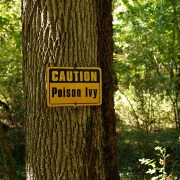Stevens-Johnson syndrome is a potentially fatal skin disease resulting from a drug reaction. Stevens-Johnson syndrome, and the closely related disease toxic epidermal necrolysis have been linked to a reaction to the drug Bextra, a cox-2 inhibitor. Other drugs linked to Stevens-Johnson syndrome include Allopurinol, anticonvulsants, barbiturates, Carbamazepine, Phenytoin, non-steroid anti-inflammatory drugs, and sulfa antibiotics.
Stevens-Johnson syndrome can affect any age group, but is more common in older people, who potentially use these drugs more frequently than other age groups. Individuals with AIDS are at a higher risk of contracting both Stevens-Johnson syndrome and toxic epidermal necrolysis. Other infectious diseases, including herpes, diphtheria, typhoid, hepatitis, and influenza have been shown to cause or contribute to Stevens-Johnson syndrome. In some causes, radiation therapy or ultraviolet therapy can cause or exacerbate Stevens-Johnson syndrome.
Stevens-Johnson syndrome can begin with flu-like symptoms, such as coughing, headaches, fever, and aches. These symptoms are followed by the development of a painful red or purple rash originating on the face and torso, which may spread elsewhere. The rash may form blisters, which can affect the eyes, mouth, and genital region. The extent of rash spreading varies by patients, but some experience rapid spreading over the course of several hours. Patients may experience swelling of the face and tongue, skin pain (typically associated with the rash), hives, and blistering of the skin and mucous membrane. Some patients may experience shedding or sloughing of the skin. Following the development of the rash, patients may experience a sore throat, a burning sensation in the eyes, an aggravated cough, or fever. The mucous membranes can become inflamed, and with toxic epidermal necrolysis, the outer layer of skin can peel. The body may begin to shed the nails and hair while the patient experiences chills and fever. The skin may appear burned, and the rapid loss of skin can lead to infection and death.
Treatment for Stevens-Johnson syndrome or toxic epidermal necrolysis depends on the cause. The condition is severe, and typically requires immediate hospitalization. If the cause is drug related, the drug should be stopped immediately and surviving patients are treated intravenously to replace lost fluids while the skin is re-grown. During the healing period, cool wet compresses should be applied to soothe skin blistering and damage. Some patients may have dead skin removed by a medical team and receive topical anesthetics on the affected areas. The chances of survival depend on the severity of the condition on hospitalization and the individual’s medical history. Patients with a gene called HLA-B12 are at higher risk for the development of Stevens-Johnson syndrome and may have a lower survival rate. Treatment may also include antihistamines (to reduce irritation), topical steroids (to reduce inflammation), antibiotics (to control or prevent infection), and pain medication. Use of intravenous corticosteroids and IGIV (Immunoglobulin intravenous) are being used to treat Stevens-Johnson syndrome and may prove effective to individuals that did not receive this disease through a drug reaction. In some instances, skin grafting may be necessary, and will be determined by the medical team.
Both Stevens-Johnson syndrome and toxic epidermal necrolysis are fatal diseases because of the high risk of infection. It is important to receive treatment as soon as possible, as early detection leads to a higher incidence of a successful recovery.
References:
1) http://www.mayoclinic.com/health/stevens-johnson-syndrome/
2) http://www.skinassn.org/
Chris Gromisch is a Junior Chemistry major at Trinity College






Add a Comment1 Comments
Good day everybody my names are RICHARD M. WILSON, a student of UNIVERSITY OF BENIN , department of CHEMICAL ENGINEERING final year student, always work hard to make a successful living but now am very sick in hospital suffering for kidney cancer, I only have my mother MRS.RICHARD FUNKE, who have being trying for my education, I lost my father some years ago, now am in University of Benin Teaching Hospital (UBTH) P.M.B 1111, Ugbowo Lagos Road, Benin City Edo State, NIGERIA, the Chief Medical Director Prof. M.O.Ibadin is asking for a deposit of ₦4.5000000.00 for my operation please my brothers and sisters my life is in your hands, help me to stay, help me to survival, I don’t want to die now, I don’t mine any amount you contribute please just help me, I know if you can help me I can make it in life, in case the good lord of Abraham, Isaac and Jacob torches your heart this is the doctor’s email [email protected] him is going to give you details on how your contribution is going to get to me, as you contribute, GOD will reward you abundantly( Amen) and this is my telephone no +2348141914038. And my thanks still go to DR. MARVELOUS for helping me to post my comment to the world, and special thanks to God almighty for still keeping me alive.
February 13, 2015 - 3:05pmThis Comment